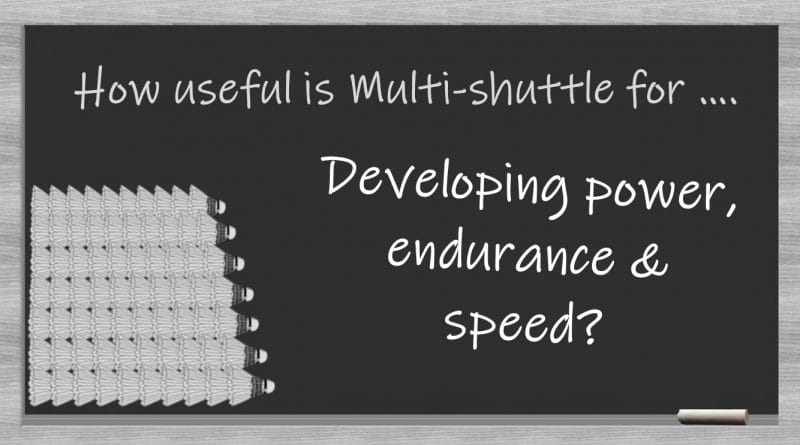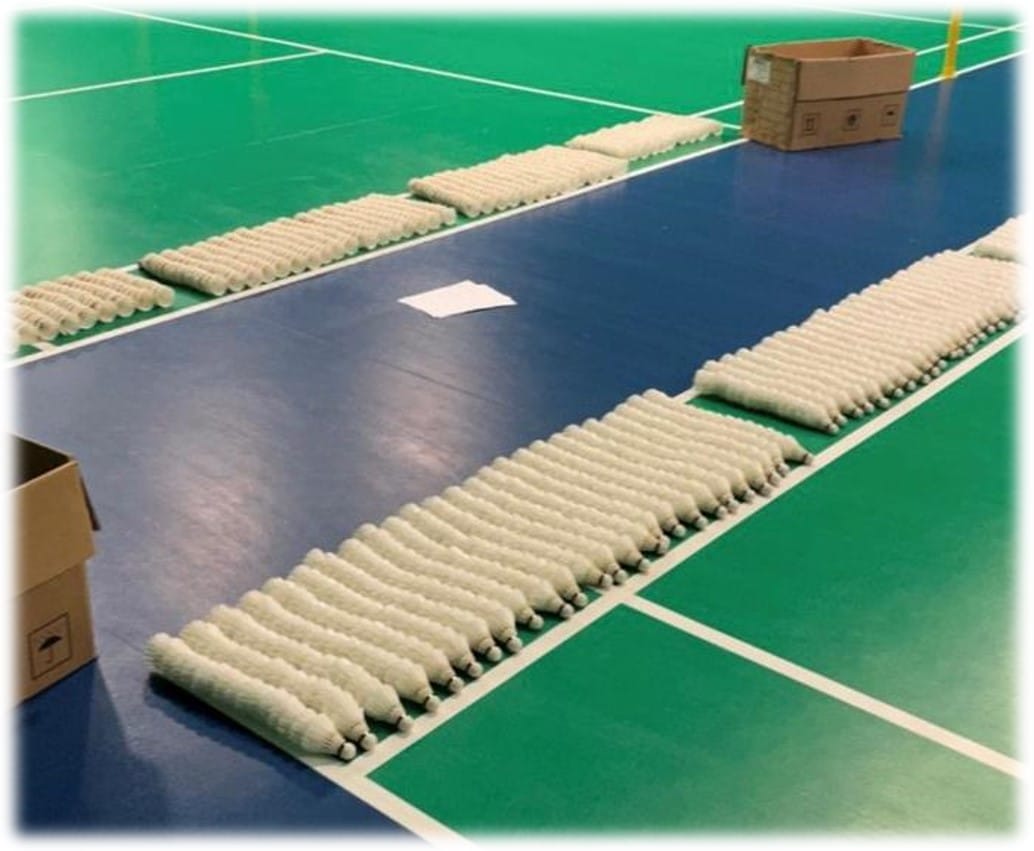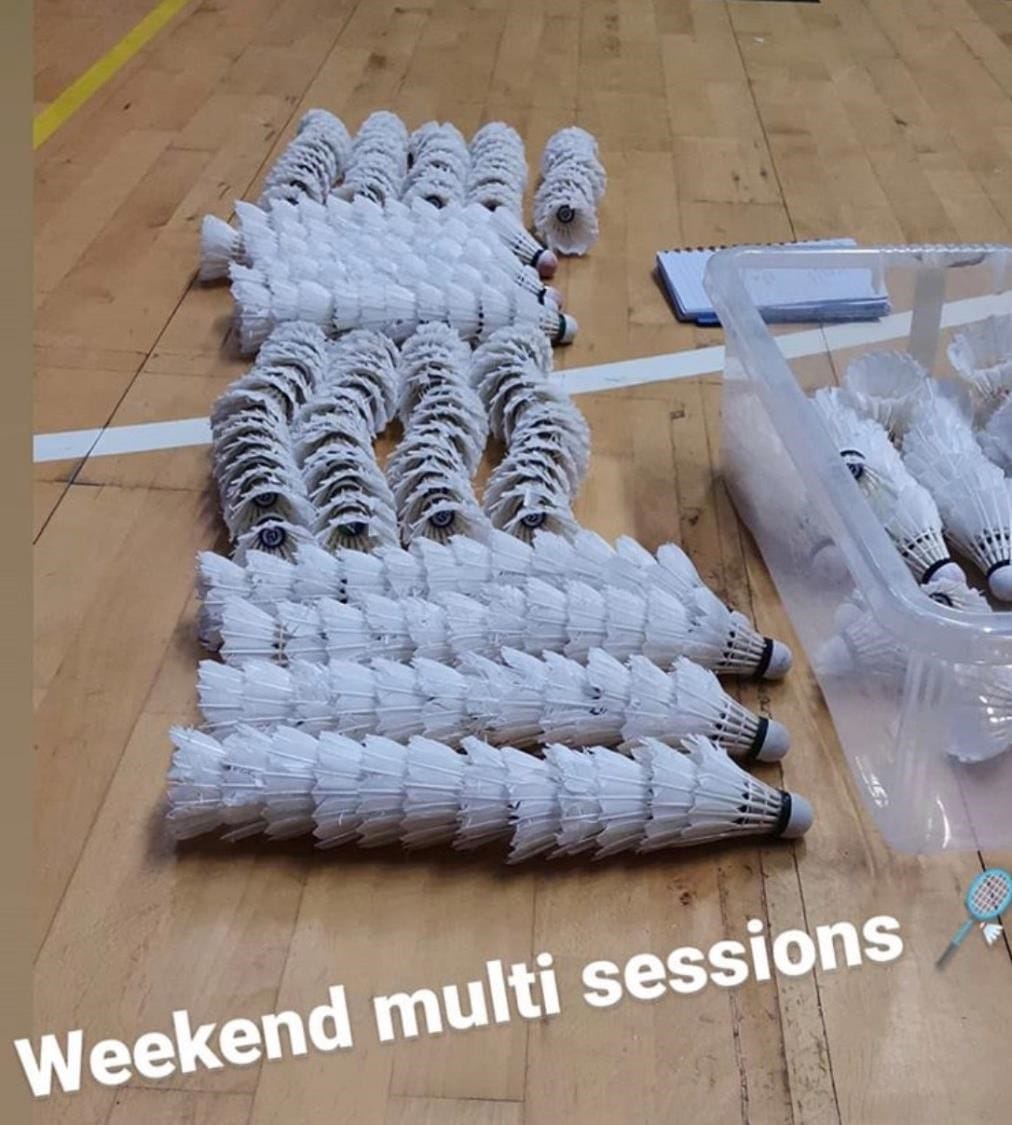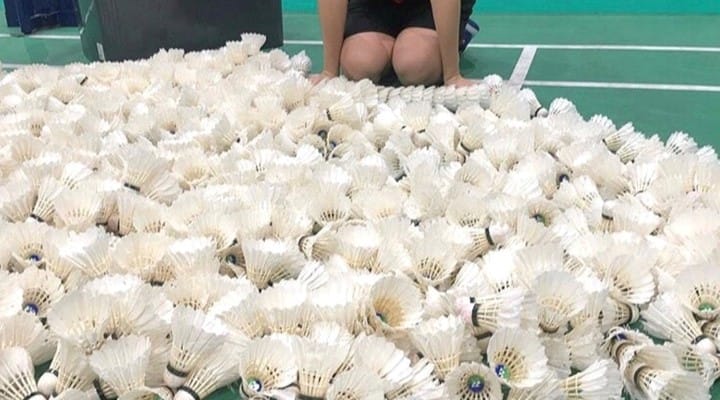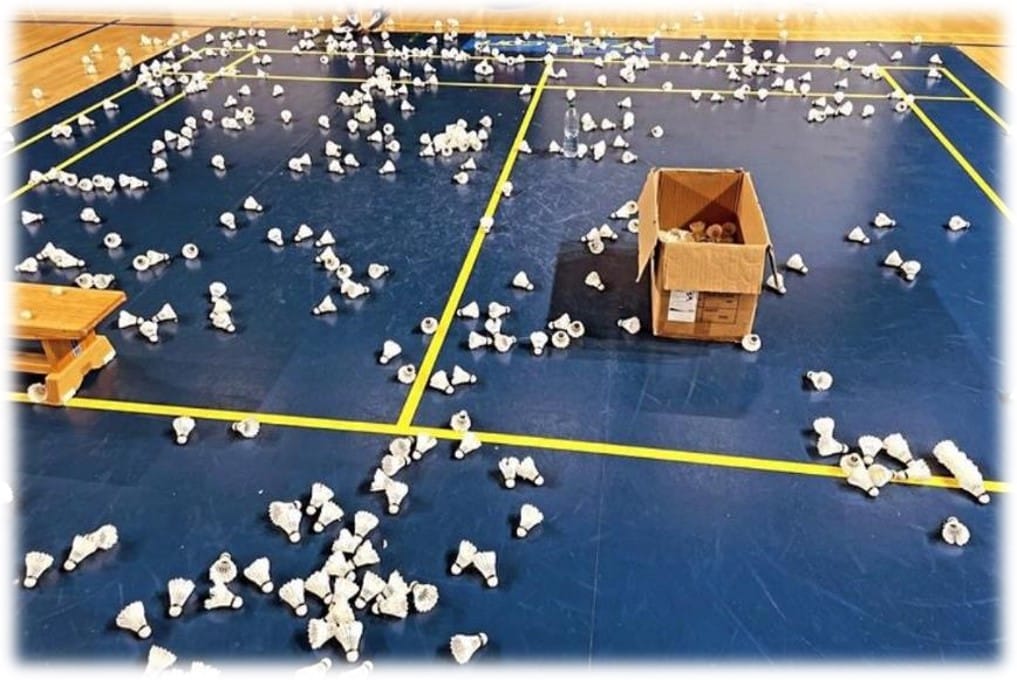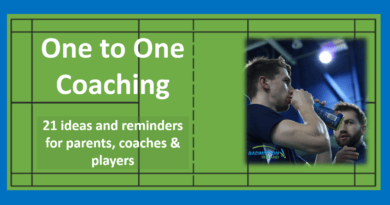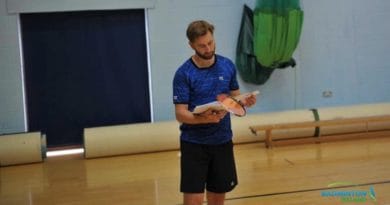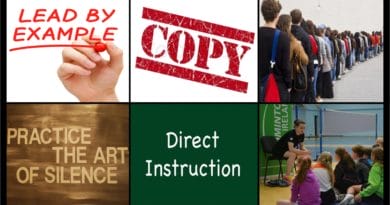How useful is multi shuttle for developing power, endurance & speed?
Can multi shuttle be used to specifically develop power, endurance & movement speed?
Yes, but you need to have a plan and consider all the options
It’s much more than feeding sets of 20 shuttles as fast as you can
Don’t forget to try the survey at the end 🙂
If you use multi shuttle because you believe it can be used to challenge and develop physical aspects
are you are willing to have some concepts challenged?
– – – – – – – – – – – – – – – – – –
How useful is multi-shuttle for improving endurance, power & speed – the survey results
My thoughts: how many do you agree with?
Multi shuttle to improve endurance
Multi shuttle to increase explosive power
Multi shuttle to increase movement speed
The survey – go to it now
– – – – – – – – – – – – – – – –
This post is part of an 8 part mini-series. Click here to see all the other posts.
– – – – – – – – – – – – – – – –
How useful is multi-shuttle for developing power, endurance & speed ?”
This was the highest-rated effective use of a multi-shuttle practice – the survey results
Approximately 90% of coaches thought that it was highly (52%) or moderately effective (41%)
Many commented that multi shuttle allowed players to experience physical elements in ‘beyond the game’ conditions. Either in longer rallies (duration & court coverage), isolated repetitions of explosive movements, or experiencing ‘overspeed’ training (shuttles being returned faster than in a game).
How did you developed the programming skills (work/rest/specificity) to ensure effective progress?
Exhaustion at the end of every session doesn’t necessarily equal physical improvements
– – – – – – – – – – – – – – – –
My thoughts: how many do you agree with?
- Multi-shuttle is ideal for improving the endurance and speed elements of physical capacity, although we need to be aware of the different practice aims
- Improving endurance by extending the duration (time) that players work in a ‘rally’
- Increasing the court distance moved
- Increasing explosive power badminton court movements
- Increasing speed of reaction: (coming soon)
- Do you have any others?
-

We need to understand each of the different aims above, ok, some of them can be combined into the same multi-practice. Have you developed the programming skills required to do this, and where did you find the guidance or advice?
- It’s not just a case of sorting out lots of shuttles into rows of 8, 15 or 20 and then speed feeding them until the player falls over with exhaustion!
- Unfortunately, exhaustion seems to be one of the main criteria used by coaches and players! How do you judge a successful physical multi-session?
- Have you tried measuring physical aspects using: RPE ( Rate of Perceived Exertion), or HR BPM monitoring (heart rate recording and working in target HR zones)
- When designing a multi-program do you think that coaches could refer to those considerations that are used in the gym i.e. when creating Strength and Conditioning training (S&C) programmes? Aspects such as overload, adaptation, work/rest etc. are all important. Do you take these into consideration, or do you just copy others?
- Who is going to be the first person to write a book, or article, or carry out scientific research to advise badminton coaches on how to design and monitor player development using multi shuttle practices. It is certainly needed, will it be you ??? 🙂
Where is the sports science research and objective analysis of multi-shuttle?
I’m sure physical components can be trained, but where is the guidance to help us all
If you target physical aspects, do you agree with the thoughts & recommendations below?
I’ve split them into 3 parts: endurance, explosive movements, movement speed
– – – – – – – – – – – – – – – –
Improving endurance of time in rallies and court distance moved
Positives and advantages
- Multi feeding is very controllable and it’s possible to extend rallies beyond that experienced in a match for both time and distance covered.
- Sessions can be designed, recorded, and analysed. If feeders are sensitive to the practice performance, fatigue is easier to observe than in free play matches.
- All players can be stressed, whatever their playing level. Player fatigue will happen, in fact, it’s either the goal or one of the desired factors.
How do you decide which endurance elements to extend beyond what happens in a game?
Time in a rally or distance covered
Negatives and disadvantages
- It’s very easy to give everyone the same program (sets and reps). Is that good coaching and effective practice, but how would you individualise a program?
- Don’t just work to exhaustion, it’s very easy to do that. There are dangers in doing that. Do we use enough specific measures to ensure that endurance is being trained?
- Coaches, do you care enough about your players to design progressive ‘overload’ multi practices? How would you do that?
- Feeders, you will have to adjust your feeds so that players are just able to get to the next shuttle as they get tired. Be aware that whilst this will improve endurance it may have a negative impact on other aspects such as movement, anticipation, tactical understanding, etc.
Why aren’t more scientific studies done to understand the training parameters and protocols?
Do you think this information would be useful to you?
Recommendations for developing endurance
- Consider how you design the programme to develop Endurance. Consider what type of endurance you are targeting.
- Write it down, make it player specific, understand overload, and review and adjust if required.
- Decide how you want to measure the effort within the sessions: HR monitors, R.P.E player assessments. Use this information to adjust loads and rest periods.
- Work critically to determine the length of ‘rally’ that is appropriate to the player. Make more adjustments in the sets, more than the reps (shuttles fed). Just using lines 10, 16, and 20 isn’t designing a programme.
How do you manage the difference between players just chasing shuttles & developing effective useful endurance?
– – – – – – – – – – – – – – – –
Increasing explosive power in your movements
Positives and advantages
- It’s great for assisting in developing badminton power movements as the movement can be isolated from a larger rally but yet stay in context regarding the need for being explosive.
- Feeding situations are easily repeatable.
- It’s an opportunity to talk with your S&C trainer friends to ensure that sessions allow power to always be ‘available’ to the player. Can they help by referring and comparing your on-court program to that in the gym using a barbell and plyometric work? There should be similarities in protocols and programmes.
They key is to undertstand what makes an effective power / explosive training multi
Where do coaches learn the skill of designing sessions specifically for explosiveness?
Negatives and disadvantages
- The sets and reps need to be carefully managed. What are the effective ranges for developing power? Isn’t this the same problem faced by S&C experts?
- Be careful, you can easily overload players using these power situations. It’s very easy to just do one more set. Waking the next day and being unable to move is not a sign of a great session.
- Ensure that the technique of landing is established. It’s often a forgotten part of an explosive multi and one that can easily cause injury.
I recommend you explore what explosive movements are best improved using multi-shuttle
Look closely at doubles and singles, establish how these movements can be replicated
Recommendations for developing endurance
- Consider how you design the programme, write it down, make it player specific, understand overload, review and adjust if required.
- Decide how you want to measure the effort within the sessions: HR monitors, R.P.E player assessments. Consider what rest intervals best reflect the demands of a game.
- Work critically to determine eth length of ‘rally’ that is appropriate to the player.
- Make adjustments in the sets and reps (shuttles fed). Just using lines 10, 16, and 20 isn’t designing a programme. Would a player perform a truly explosive movement 10-16 times in a single rally?
– – – – – – – – – – – – – – – –
Improving movement speed
Positives and advantages
- The patterns of feeding allow for players to fully commit to movements to and from the shuttle. Any uncertainty (as in a real game) is taken away allowing players to move with only speed as an aim.
- The specific movement pattern can be replicated and controlled ie moving from the backcourt to the net, or alternatively front to back. The combinations are in the control of the coach and player, and once identified can be programmed.
It is easy to place demands that go beyond what happens in a game
Do you have confidence in your programme and its specificity?
Negatives and disadvantages
- Removing game-like uncertainty in favour of speed must be considered. Target those movements where certainty is a high probability ie a tight net spin into a short lift and smash/kill, a rearcourt power smash into a net attack.
- Create feeding situations that replicate the need to speed. Too often situations are created that require players to move at maximum speed to areas of the court that could not happen in response to the strokes played by the player.
- The work rest intervals for ‘maximum speed’ multi sessions are different to that for movement endurance goals. Be specific in the programming and ensure that the timings (work/rest) are actually followed during the session. Consider how much time players take between rallies in a competition.
There is a difference between players just chasing shuttles compared to real game-like movements
Target those movements where certainty is a high probability
Recommendations for developing movement speed
- Consider how you design the programme, write it down, make it player specific, stick to your plan during the session (especially the work/rest), and review and adjust if required.
- Replicate situations that require speed. Check that the feeding allows the player to move with maximum speed and that the pattern of movement is game-like.
- Target movements that have a high degree of game certainty
- Consult with an S&C expert who understands badminton to determine the load placed on the player during the speed work. It is important that if pure speed improvement is the goal, the session does not become a speed endurance session. There is a difference.
– – – – – – – – – – – – – – – –
How would you rate the usefulness of developing power, endurance & movement speed using multi shuttle?
It would be great if you could complete the short survey below, it will take you about 3 minutes, that’s all ????
I’m trying to gather information from coaches like you about how you use multi shuttle practices. I hope that you enjoy the questions and the thoughts they may provoke.
– – – – – – – – – – – – – – – – – – – – –
I do not agree with all the points above
I’ve made them in the hope that they will simulate your thoughts: good or bad

